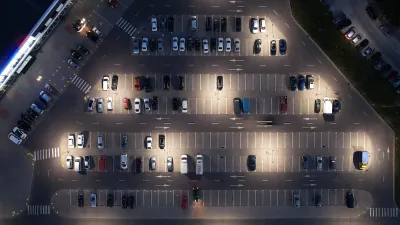People living in cars are often at the mercy of parking regulations, forced to relocate frequently and left without access to resources like restrooms. Safe Parking programs aim to change that.

A movement to provide safe parking areas to unhoused people living in cars is spreading across the nation, writes Ysabelle Kempe in Smart Cities Dive.
From San Diego to Duluth, cities are designating lots as ‘safe parking’ zones where people can spend the night. “The programs also offer people experiencing homelessness “an opportunity to be somewhat stable for a period of time,” since they can return to the same lot night after night and don’t need to worry about breaking the law by parking on the street, said Donald Whitehead, executive director at the National Coalition for the Homeless.”
Some programs offer resources such as restrooms, Wi-Fi, and access to social services. While experts say they are not a long-term solution to homelessness, safe parking programs can offer security and stability for at least a short period of time.
Vehicular homelessness, while common — accounting for more than 44 percent of unsheltered homelessness in Los Angeles County in 2023 — is particularly insidious because of its relative invisibility. Often, people living in cars need a relatively small amount of support to get back into more stable housing situations, according to Matthew Tecle, executive director of Safe Parking LA, a safe parking program that operates six sites in Los Angeles.
FULL STORY: Safe parking programs offer support to people living in their cars

Planetizen Federal Action Tracker
A weekly monitor of how Trump’s orders and actions are impacting planners and planning in America.

Congressman Proposes Bill to Rename DC Metro “Trump Train”
The Make Autorail Great Again Act would withhold federal funding to the system until the Washington Metropolitan Area Transit Authority (WMATA), rebrands as the Washington Metropolitan Authority for Greater Access (WMAGA).

The Simple Legislative Tool Transforming Vacant Downtowns
In California, Michigan and Georgia, an easy win is bringing dollars — and delight — back to city centers.

DC Backpedals on Bike Lane Protection, Swaps Barriers for Paint
Citing aesthetic concerns, the city is removing the concrete barriers and flexposts that once separated Arizona Avenue cyclists from motor vehicles.

In These Cities, Most New Housing is Under 441 Square Feet
With loosened restrictions on “micro-housing,” tiny units now make up as much as 66% of newly constructed housing.

Albuquerque’s Microtransit: A Planner’s Answer to Food Access Gaps
New microtransit vans in Albuquerque aim to close food access gaps by linking low-income areas to grocery stores, cutting travel times by 30 percent and offering planners a scalable model for equity-focused transit.
Urban Design for Planners 1: Software Tools
This six-course series explores essential urban design concepts using open source software and equips planners with the tools they need to participate fully in the urban design process.
Planning for Universal Design
Learn the tools for implementing Universal Design in planning regulations.
Smith Gee Studio
City of Charlotte
City of Camden Redevelopment Agency
City of Astoria
Transportation Research & Education Center (TREC) at Portland State University
US High Speed Rail Association
City of Camden Redevelopment Agency
Municipality of Princeton (NJ)





























